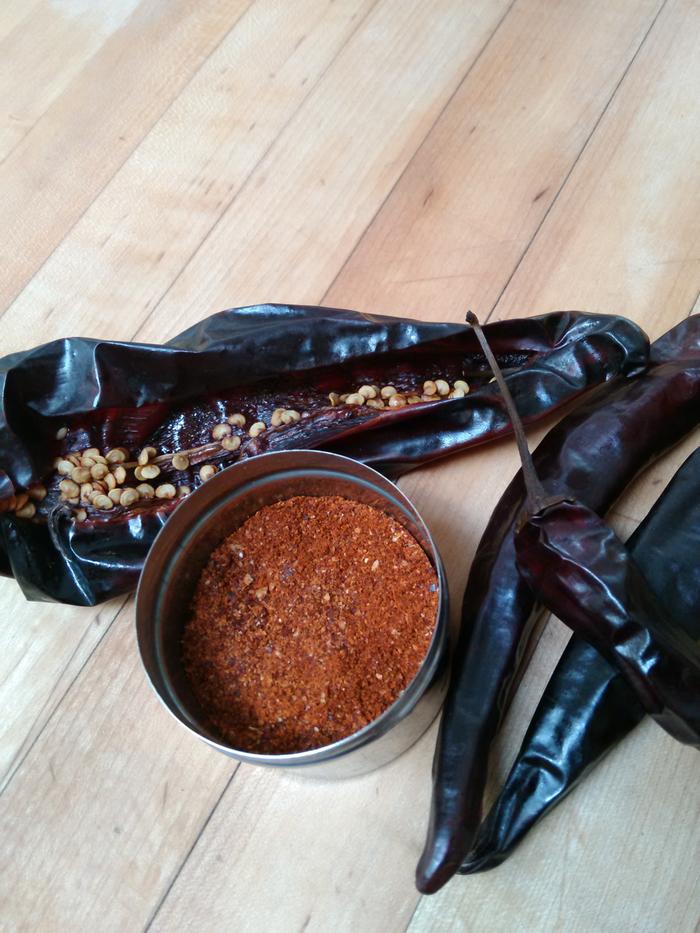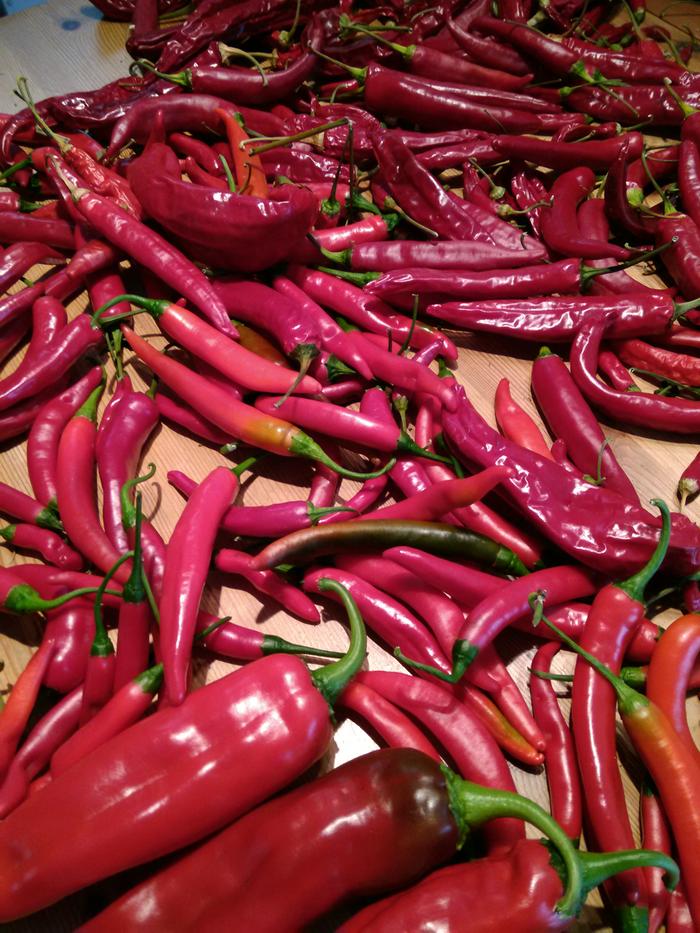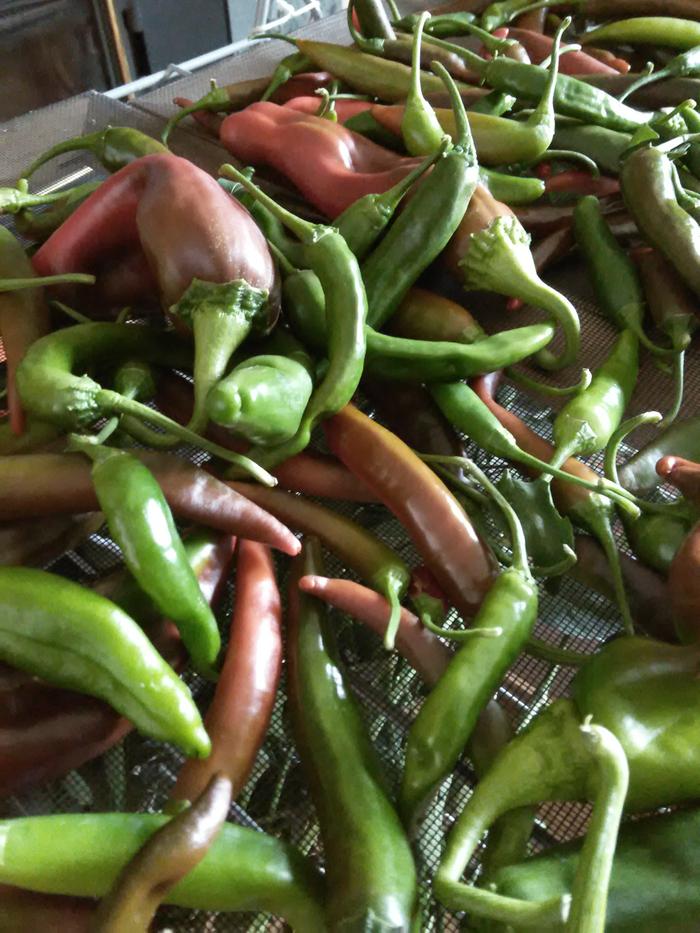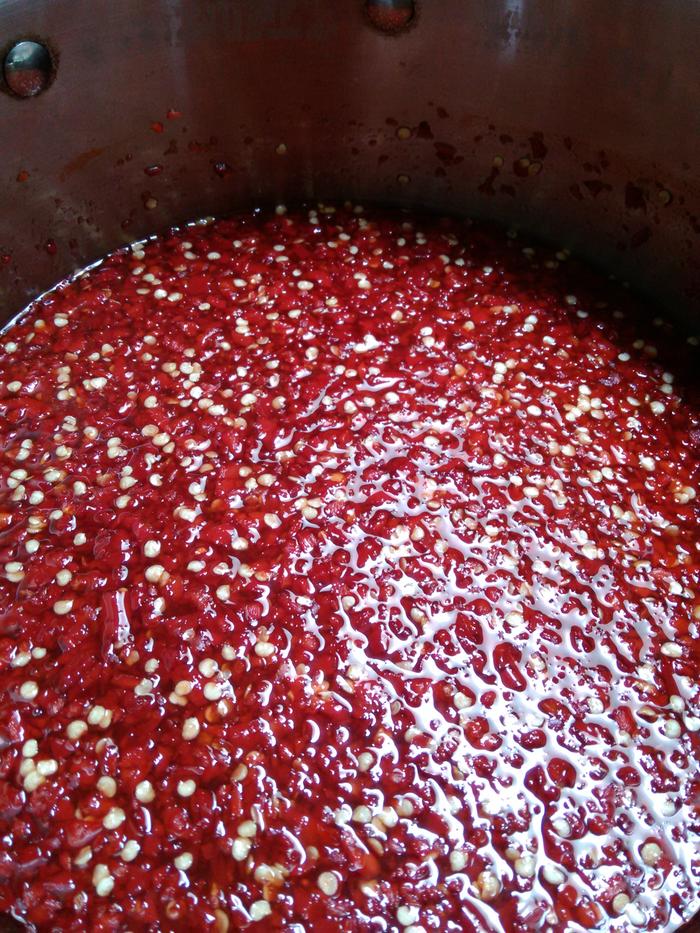Let's talk about chili peppers. This year is looking to be a bumper crop, and I would love to hear your imput as to when to harvest, and what you do to preserve your peppers.
For about a month every year, the grocery store has these tiny, red chili peppers for sale in the fresh food section. I don't know what type they are, as each grocery store chain has their own name for them, most of them call these peppers 'chili'. They come in a packet of about 15 to 20 peppers, and they are in my opinion the most delicious pepper that ever existed.
I usually buy what I imagine is twice what I can eat in a year, dry the extra peppers, then run out of peppers about 6 months before the next batch comes ready in the store. These aren't the most expensive peppers in the world, but my inner miser feels that $6 for a dozen peppers is a bit much. My inner gardener says "Oh wow! LOOK! There are seeds! Let's plant them. What? Nonsense, I can plant them whatever time of year I feel like it."
For the last thirteen years, I've diligently planted seeds saved from these delicious chilis, I grow them in a warm corner of the garden, and a couple of times, I've even harvested chilis off them. Although our summers are fairly warm and long, I suspect we don't have the weather these peppers need to thrive. This spring, I ran out of space in the garden so I put my four pathetic pepper plants in the greenhouse. Since the highest these peppers ever grew in the garden was six inches, I figured that they might grow 10 given the extra heat. Wow oh wow was I mistaken. These peppers are darn near five foot tall! Each plant has about a hundred peppers. Some of them have even turned red.
Now that I have peppers, lots of peppers, I'm curious what people usually do with theirs.
Do other people pick the immature peppers that haven't turned red yet, and call them green peppers? In years past, to harvest any sort of a crop, I usually pick the peppers green just before the frost. It works well for me, but I wonder if it's usual.
When do you harvest the peppers, just as they turn red or after they are fully red? Why?
How do you process your seeds? I read that some people ferment their pepper seeds.
Any thoughts on what sort of pepper these are?
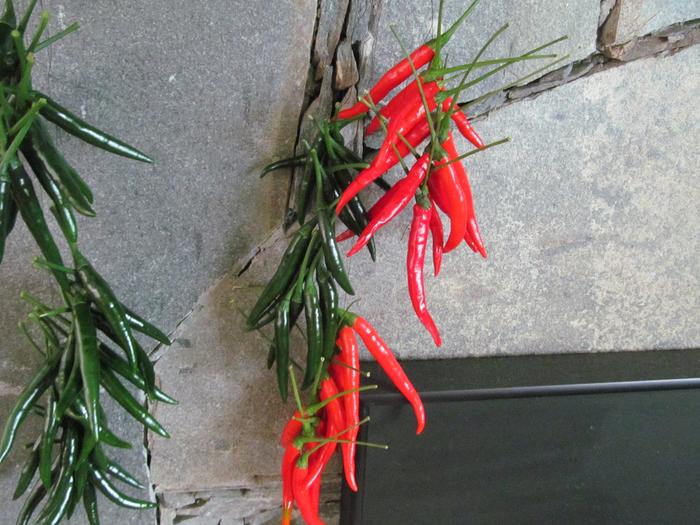
What do you do with all your chili peppers? Recipes anyone?
I usually dry mine on a string as I fell the dehydrator seems to make the peppers taste washed out. I also love making fermented hot sauce. I'm copying
my recipe for hot sauce from my blog, and I give permission for me to do so. It's inspired by
Wild Fermentation by Sandor Katz.
Fermented Hot Sauce with Garlic

For each 1/2 cup of dried chilis
1 clove of garlic and
1 Tbs of salt
water
Roughly chop up the chilis, or not.Peal the garlic and roughly chop it up or notCombine salt, garlic and chili in a small jar. Add water to cover.Use something to press down on the chili mix so that every part of it is submerged. I cut out a circle out of plastic container and then filled a small mason jar with water to use as a weight.Leave on the counter for at least a week... I um, forgot about it and it was there for over a month. If anything, I think the longer ferment was good for it. Check it every couple of days (or not if you forget) to make certain everything is submerged and to scrape off any mould that forms. If the mould is black, toss the whole thing, otherwise, it should be fine. The spices, garlic and salt are strong enough to kill just about anything bad, but if it develops an off smell, don't eat it.When it's time, place the chilis, garlic and brine into the blender or blitzer. Blend or blitz till it's a lovely puree. You may want to add a pinch of sugar or a few drops or honey. A few drops of apple cider (or other natural) vinegar also go good in this.
You can strain the seeds out after blitzing it, to make a sauce more like Spicy Cock Sauce (can't remember what it is actually called. It's hot and has a picture of a cockerel), or keep it chunky if you like.






































 1
1




 1
1





